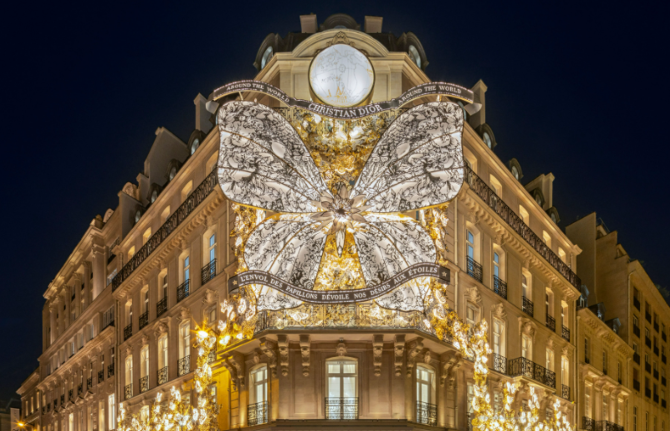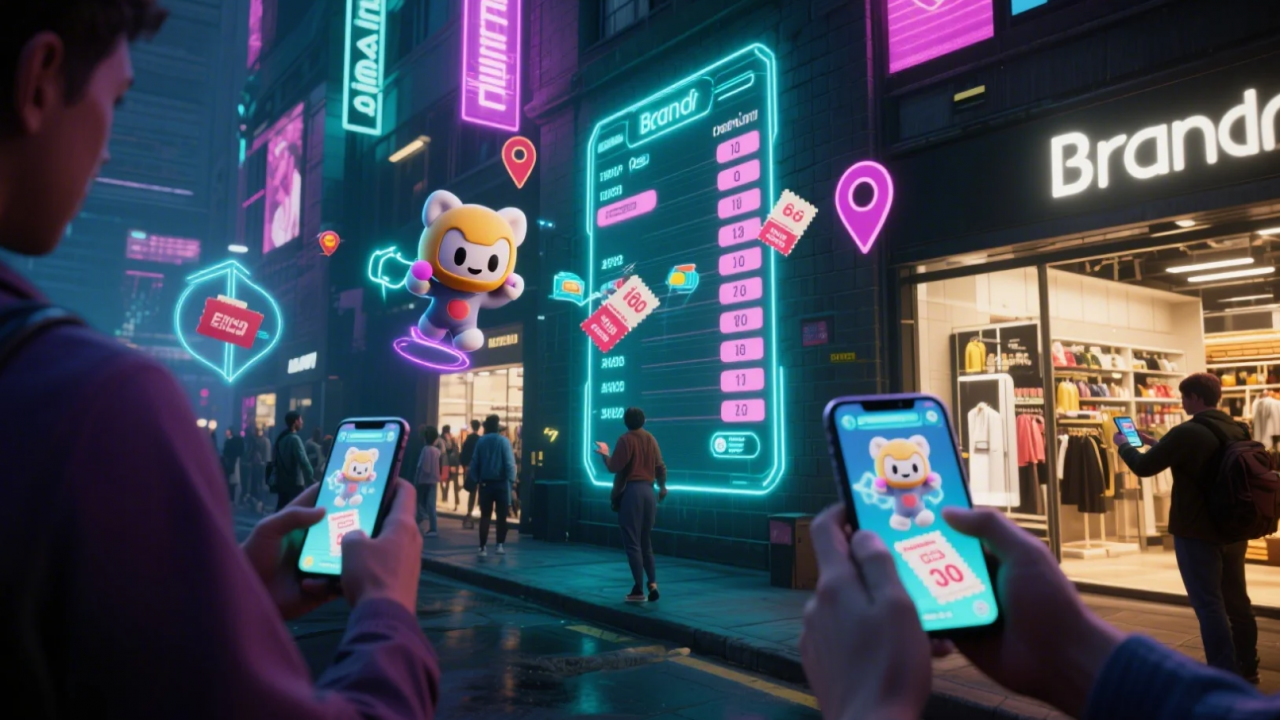What is Visual marketing?
Visual marketing is a technique to interact with the audience and promote your products or services by using visual content like images, videos, or other visual elements. This helps brands attract customers through eye catching and interactive visuals of their products. They can also convey their business ideas or messages in an easily understandable manner.
Today’s modern customers love to explore their desired products in an interactive way, and visual marketing does exactly that. In this way, visual marketing proves to be an effective tool to enhance brand engagement and improve conversion rates in the e-commerce sector.
The Evolution of Visual Marketing
From Traditional to Digital
Traditional advertising methods used static visuals like billboards and television ads to promote their products and interact with customers. But those marketing techniques did not prove much beneficial as they were not interactive. Users could only watch the products through ads or pictures without engaging with them.
But, as technology is advancing, marketing techniques are also becoming more interactive through digital channels like social media and websites. Users can not only watch the visual content, but they can also engage with it by simply clicking on the ad, and watching videos and animations. This piques their interest and enhances product engagement.

Source: Linkedin, Messika
The Rise of Visual Platforms
The rise of visual heavy platforms like Instagram, Pinterest, and TikTok has taken visual marketing strategy to another level. These platforms provide attractive visual content including aesthetic images and short videos which grab user’s interest through interactive displays. Moreover, influencers on these platforms help brands reach diverse audiences in engaging ways that enhance brand’s visibility and awareness.

Key Elements of Effective Visual Marketing
Brand Identity
We all have heard that consistency is the key to success. This rule also applies to a brand’s marketing strategies. When you use the same colors, fonts, and visuals across all your advertising platforms, it helps customers recognize and remember your brand quickly. Unique and aesthetically pleasing visuals increase people’s familiarity with your brand. This strengthens brand identity and helps it stand out in a hugely crowded marketplace.
Content Types
Visual marketing includes different types of dynamic, interactive, and engaging visual content elements. Let’s explore how each type improves brand’s marketing approach:
Infographics: Infographics combine eye catching visual elements with textual information. Brands can use this visual strategy to explain to the audience how their product or services operate and how they can subscribe to get the most benefits out of the product. According to a latest study, infographics can boost website traffic by up to 12%.
Videos: Videos are the most effective and cool visual marketing strategy that helps brands connect with their target audience quickly and easily. Brands can display product videos on their websites and social media accounts, explaining product features in an engaging way. Furthermore, adding user reviews and interviews will boost customer confidence in your purchases, leading to more sales and less returns.
AR/VR experiences: Emergence of AR and VR technologies has reshaped how customers interact with their desired products and brands. These technologies combine digital elements with real world scenarios and let users explore and try on their favorite products in an immersive environment.
Product photography: High-quality pictures of a product help brands showcase their product’s look and highlight its features in detail. Effective product photography not only captures the product but also conveys the brand’s emphasis on quality and customer satisfaction.
Design and Aesthetics: Use of visually and aesthetically pleasing design elements can have a strong impact on a brand’s marketing strategy. Carefully chosen color schemes, fonts, and layouts will set the tone of your products and help customers connect with your brand quickly.
Storytelling Through Visuals: Creative and engaging visuals help brands convey their brand message about the brand’s high quality craftsmanship and rich heritage. This will build an emotional bond between customers and brand, fostering brand loyalty and long-term customer retention.
Visual Marketing Tools and Technologies
Design Tools
Visual marketing can only help you achieve your goals if you use good design tools to generate visuals aligning with your brand image. Here are some great tools that you can use in 2024:

Canva: It is one of the most popular and user-friendly visual marketing tools to generate compelling visuals for your brand. There are thousands of free and easily customizable templates for all social media platforms that can be used to create interactive infographics and posts.
Adobe Creative Cloud: Adobe Creative Cloud is an all-in-one visual marketing content tool that includes Adobe Photoshop, Illustrator, and InDesign. These tools help you design, create, and edit creative visuals to enhance your online presence.
Figma: It is one of the most widely used marketing content tools for User Interface (UI) designs. It lets users collaborate in real time and resize and readjust the visuals easily.
AR/VR and 3D Visualization
Augmented reality, virtual reality, and 3D visualization technologies have changed the virtual marketing landscape completely. Brands are using these technologies to provide customers with immersive e-commerce experiences. Augmented reality lets users interact with digital products in real world environments, such as trying on clothes, jewelry, and other fashion products in real time.
Virtual reality technology uses VR tools like VR glasses or VR headsets to take users to a virtual world, where they can interact with virtual product models and play interactive games. Moreover, 3D visualization technology allows users to explore online products from all sides and angles, so they can get a 360 degree view of the product before buying it.
We, at Kivisense, provide highly immersive AR/VR solutions and 3D visualizations of products to enhance brand engagement and boost conversion rates of your e-commerce brand.
AI and Automation

Integration of AI features and tools streamlines marketing through visual automation. When a user is scrolling through social media apps like Instagram or TikTok, visual AI will use AI algorithms to provide personalized visual content that best aligns with the user’s interests and preferences.
Moreover, many graphic design tools are using AI integration to create highly engaging visual content from text prompts. This helps those with no special design skills to create interactive visual content quickly and easily.
Case Studies and Industry Examples
Nike
Nike is a popular sportswear brand that excels in creating innovative visual marketing content. It uses emotional visuals to tell stories that help them connect with customers. The brand uses powerful taglines like ‘Just do it’ with inspiring videos to convey its message in a dynamic and engaging manner.
The brand has also stepped into the AR field and offers immersive experiences to customers. One such example is the virtual try-on feature of Nike Pegasus 41 Blueprint Shoes, which lets users explore shoes in a dynamic environment. They can apply dynamic lighting filters and share their experience with others through social media, leading to increased brand reach.
Jordan has launched its first World of Flight store at Beijing Sanlitun. It features many interactive experiences that enhance the excitement of basketball fans. Visitors can scan the building to unlock a fun AR cockpit where they can see basketballs drop and AJ1s and shoeboxes flying out in the sky using augmented reality.
They can also wear Jordan hoodies and take trendy pictures with dynamic and cool AR filters. Moreover, visitors can also get exclusive free gifts and surprises while enjoying immersive AR experiences. These engaging experiences let them celebrate the spirit of Jordan in an exciting manner and enhance the brand’s engagement and visibility.
IKEA
IKEA’s visual marketing strategy is quite diverse and has helped the brand gain more engagement and reach. The brand uses user generated content and visually appealing social media posts to display their home decor items.
The brand has also introduced IKEA Place App, which lets users visualize furniture or home decor items in their own space using AR/VR tools. IKEA’s visual marketing approaches have helped the brand improve its conversion rates and increase customer satisfaction. You can also experience virtual furniture placement through Kivicube.
Martell
The Noblige Limited Edition, launched by Martell & fashion designer Angel Chen, lets users visually explore the brand story and heritage using AR technology. Customers can scan the box or bottle and experience Martell’s first shipment to China in 1858 in real-time. This innovative visual marketing strategy helped the brand to share its brand story with audiences in an engaging and interactive way.
Loewe
Loewe has introduced an adorable AR experience to celebrate Qixi, the Chinese Valentine’s Day. Loewe’s Qixi AR experience features adorable hedgehog filters, which let users interact with characters of their animated film “A Hedgehog’s Journey to Love”. Users can choose from three exciting AR filters featuring butterflies, hedgehogs, and stars.
They can capture romantic pictures and videos with their loved ones in dual-shot mode and create memorable romantic moments using hedgehogs as symbols of love. This unique approach integrates modern technology into Chinese cultural celebration and enhances user engagement and brand visibility.
Future Trends in Visual Marketing
Short-Form Video
Today’s generation has a short attention span, and they prefer to watch short span content like short videos or reels that capture their attention quickly. The rise of visual heavy platforms like TikTok and Instagram has led to the trend of bite-sized videos and reels. Brands can use this visual marketing strategy to showcase their products and connect with customers effectively.
Augmented Reality Experiences
Augmented reality technology helps customers visualize any product in their own space before buying it. They can virtually try on clothes, shoes, jewelry, make-up, and other fashion accessories in real time. This boosts website traffic and user engagement with brand’s products, leading to more sales.
Kivisense offers industry leading AR try-on solutions for many famous luxury fashion brands like Gucci, Dior, Tiffany, Chanel, and Tommy Hilfiger. These virtual try-on experiences increase customer confidence in purchases and improve brand conversion rates effectively.
Personalization
Use of artificial intelligence and data analytics tools offer valuable insights into customer behavior and preferences. Brands can use that data to create customized visual experiences for customers. When customers get personalized content and experiences, they feel seen. This increases user interaction with your brand and boosts engagement and ROIs.
Conclusion
Nowadays, visual marketing is not just a part of a brand’s advertising campaigns, it’s a must-have. The rise of visual heavy platforms, such as TikTok, Instagram, and Pinterest, and innovative visual marketing tools and technologies, such as AR, VR, and AI, are providing a paradigm shift in visual marketing. By providing customers with more engaging and interactive visual content, visual marketing helps brands connect with audiences deeply and get more engagement and traffic.
If you are an e-commerce brand and want to implement innovative visual marketing technologies in your business, feel free to contact us. We at Kivisense love to provide our customers with engaging visual technologies and tools to help them achieve their e-commerce goals quickly.






